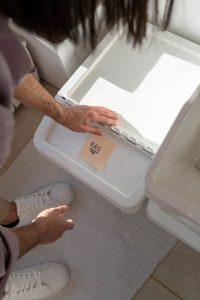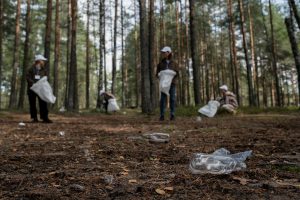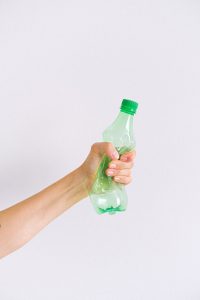What if we could wave a magic wand and remove all plastics from our lives? It would be an ideal situation if we consider the current condition of mother earth. But if we start thinking about it, we can soon realize how much plastic there is in our lives. Is life as we know it even possible without plastic?
When Was Plastic Invented?
Humans have been using plastic-like materials, such as shellac – made from a resin secreted by lac insects – for thousands of years. But plastics, as we know them today, are a 20th Century invention: Bakelite, the first plastic made from fossil fuels, was invented in 1907. It wasn’t until after World War Two that the production of synthetic plastics for use outside the military really took off. Since then, plastic production has increased almost every year, from two million tonnes in 1950 to 380 million tonnes in 2015. If it continues at this rate, plastic could account for 20% of oil production by 2050.
Why is plastic use so widespread?
Plastic is such a common material because it is exceedingly versatile, more than any other material. It can be used for literally anything since its colors, strength, weight, and durability can be modified. Plastic is the most used material in packaging for several reasons:
- Versatility: Plastic can be molded into various shapes and sizes, making it a versatile material for packaging. It can be made into bottles, containers, bags, and other packaging products.
- Durability: Plastic is a durable material that can withstand a wide range of temperatures and environmental conditions. This makes it suitable for packaging products that need to be protected from moisture, air, and other external factors.
- Lightweight: Plastic is a lightweight material, which makes it a cost-effective choice for packaging products that need to be transported over long distances. It also reduces the amount of packaging waste generated during transportation.
- Low Cost: Plastic is a relatively low-cost material, which makes it an affordable option for manufacturers and consumers. It is less expensive than many other packaging materials, such as glass, metal, and paper.
- Customization: Plastic can be easily customized to suit the needs of different products and brands. It can be colored, printed, and embossed to create unique packaging designs that stand out on store shelves.
What about the social benefits?
Plastics contribute to the health and safety of consumers in food and water packaging applications. Water has become a critical focus in urban areas, and plastics provide the mechanism for the supply and storage of clean drinking water. Plastic food packaging allows safe, time-dependent storage of fresh produce and other food, using temperature and atmosphere control inside the package. In addition, the quality of packaged foods can be monitored with low-cost indicator labels built into the packaging.
Why does plastic pollution contribute to climate change?
Open burning of plastic waste is also a major cause of toxic emissions. Open burning is common in many parts of the world where there is a lack of established waste collection and sorting services and is a major source of air pollution.
The world is a long way from where it needs to be. 15% of plastics are collected for recycling globally, with only 9% actually being recycled. Meanwhile, emissions of plastic waste into aquatic ecosystems are projected to nearly triple by 2040 without meaningful action. Parts of the recycling industry, meanwhile, are associated with serious malpractice around labor abuse, child labor, and corruption.
The chemistry around plastics has also grown more and more advanced, with thousands of plastic types emerging. These types create incredible complexity and have far outpaced governments’ attempts to develop effective recycling schemes.

Why is it important to reduce plastic waste?
Plastic waste is very harmful to human health and wildlife. There are over 700 species threatened directly by plastic pollution through ingestion. Seabirds, for example, consume plastic waste, which fills up their stomachs, makes them unable to feed, and causes them to starve to death.
Plastics break down into microplastics, which become magnets for contaminants in the oceans, creating a concentration of toxins.
A few ways to reduce your plastic use
1. Avoid the worst common plastics: Identify the type of plastic of a product by looking at the recycling symbol molded on the item. The three following plastics are very common, and are significantly harmful to living beings and the environment:
– Polyvinyl Chloride: An extremely toxic plastic often containing multiple unsafe additives, including lead and phthalates. Still used for some toys, clear food and non-food packaging (e.g., cling wrap), some squeeze bottles, cooking oil, and peanut butter jars.
– Polystyrene: Contains styrene, which is toxic to the brain, nervous system, and various organs. Used in Styrofoam containers, egg cartons, disposable cups and bowls, take-out food containers, and plastic cutlery.
– Polycarbonate: Contains bisphenol A (BPA), which has been linked to numerous health problems. Used in some baby bottles (though increasingly banned in baby bottles by countries around the world), clear plastic “sippy” cups, sports water bottles, juice, and ketchup containers, and in three and five-gallon large water storage containers, and most metal food can liners.
2. Refuse plastic bags and bring your own reusable bags wherever you go
Plastic bags are often used for minutes only before being discarded. And most plastic bags are not recycled, thus ending up in landfills – where they take hundreds of years to break down – or in the environment as toxic pollution.
There are now all kinds of reusable bags out there. Choose what works for you, and carry it with you in your pocket, coat, purse or car.
3. Avoid bottled water
The realities of bottled water are:
- it is less regulated than tap water;
- usually, it is simply filtered tap water;
- it is very expensive;
- it requires enormous resources to collect, bottle, and ship it
And, of course, it generally comes in a plastic bottle – usually polyethylene terephthalate – which contains the toxic metal antimony.
So, please, just buy your own reusable water bottle, it’s so easy.

4. Keep Plastic in use for longer
Going plastic-free has its positives and negatives. Plastic weighs less than glass so can reduce transport emissions, but glass is more widely recycled and contains a higher portion of recycled content which can reduce its impact on resource consumption globally. If removing plastic from your life completely is unfeasible, make your plastic containers go further. For example, when a plastic bottle finishes, try your local refill shop and fill those containers with new products including wet and dry goods. We can also reuse containers like old butter and ice cream tubs as sandwich boxes, useful tubs for screws or nails, or planters for seedlings.
5. Give Up Gum
In England, around 87% of streets are stained with gum (Keep Britain Tidy)[6] so always make sure you dispose of chewing gum in an appropriate bin, never on the floor. Did you know conventional chewing gum is made from plastic? This makes it take longer to decompose and it will break down into microplastics. Several plastic-free alternatives are now on the shelves, so look for brands that detail the ingredients of their gum and are committed to ending plastic pollution.
Can we ban plastics?
A future entirely without plastic is neither realistic nor desirable. We must be realistic in terms of interventions and understand that we cannot simply recycle our way out of this crisis. We must take a step back from focusing so closely on plastics’ end-of-life stage and look at the bigger picture, and that is – the entire plastics value chain, particularly, re-engineering our production and consumption process to reduce its use. The least plastics used; the less plastic waste is generated.
Efforts should be concentrated on global agreements to reduce the flow and variety of plastics and use disposable items of all kinds.
It is an enormously challenging task, but legislation to prohibit plastic use can be effective. In 2022 France introduced a law banning plastic packaging for large numbers of fruits and vegetables, ending the overwrapping of carrots, apples, and bananas, and pledging to gradually phase out all single-use plastics by 2040.
Generally, efforts should be concentrated on global agreements to reduce the flow and variety of plastics and use disposable items of all kinds. Individual nations must also invest in local recycling operations. That would include industrial recycling plants in developed nations or informal litter pickers in developing nations who earn a living recovering recyclable plastics from landfill.
Circular Economy’s Role in a plastic-free future
The need to deal with plastic pollution is a key part of the argument for transitioning to a circular economy.
The circular economy means moving away from the world’s current economic model of ‘take, make, throw away’.
It means redesigning products to be more durable, reusable, repairable, and recyclable and therefore kept in circulation for as long as possible. And it means changing the way we consume goods and services and rethinking consumerism as a society.
A circular economy approach to plastics would see the world move away from single-use items towards reuse alternatives such as reusable coffee cup schemes or refill aisles in supermarkets.
It would also see plastic products redesigned with recycling in mind using individual polymer plastics and designing out toxic chemicals. The European Union (EU) is leading the way currently, setting an ambitious target to make all plastic packaging fully recyclable by 2030.
Final Thoughts
We will not create a world without plastics because it is such a good material. But we can aim for a future without plastic waste and pollution. A globally coordinated approach is vital to this effort.
It is crucial that the production of new plastics is reduced and refined. The types of plastics currently being produced are incredibly complex, and often not used in an easily recyclable form.
Let’s do our best to avoid single-use plastic. Creating circular and sustainable alternatives. Managing plastic waste more efficiently. Together, let’s create systems to better reuse, reduce and recycle. Let’s push for an ambitious global agreement to end plastic pollution. Let’s demand that governments and business act, commit, and set new standards.
Use your voice, and your choice, to beat plastic pollution. Let’s do better.




